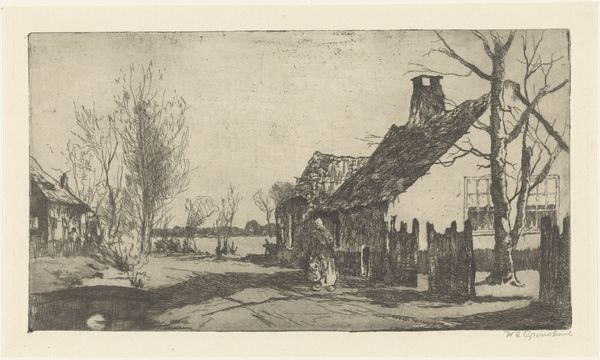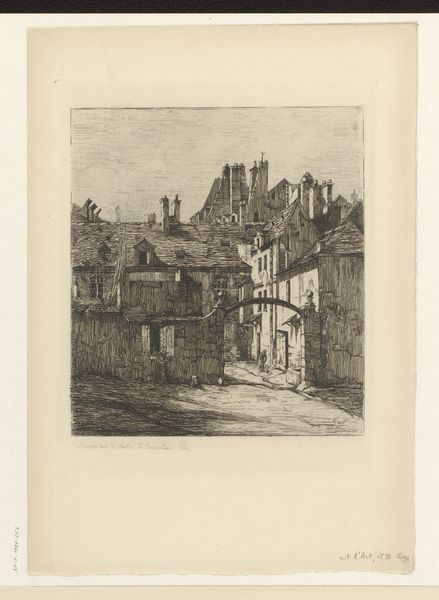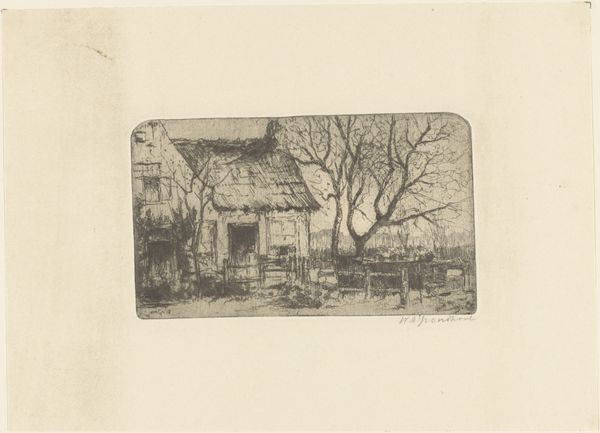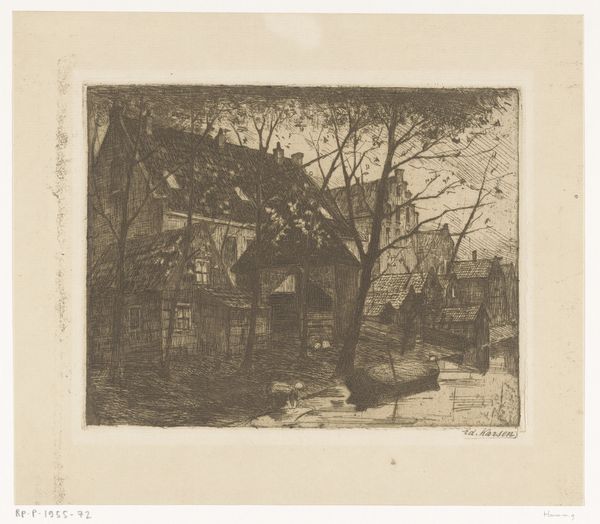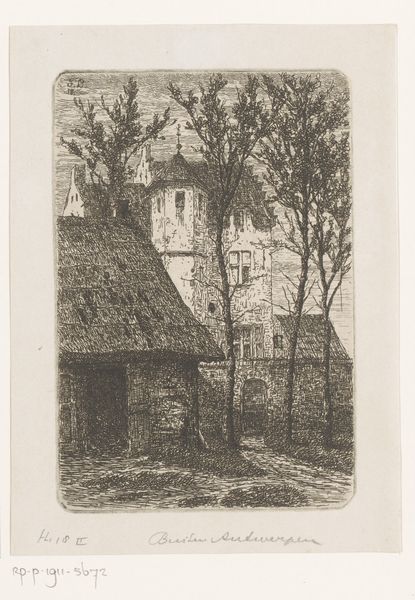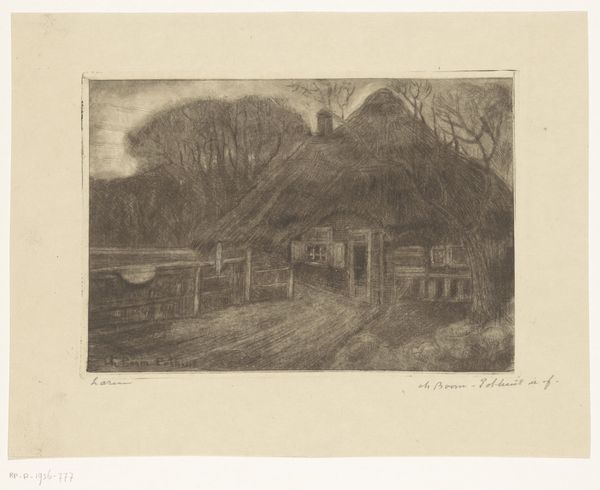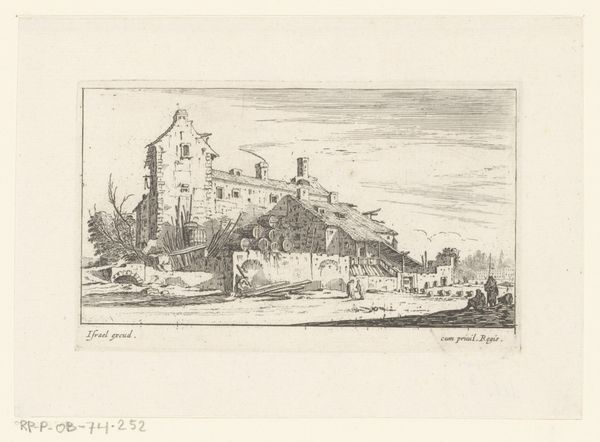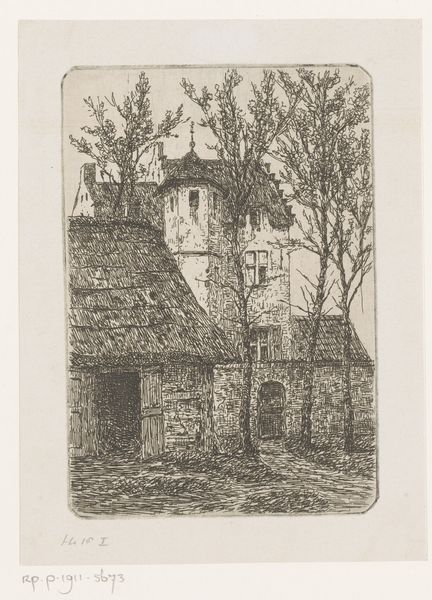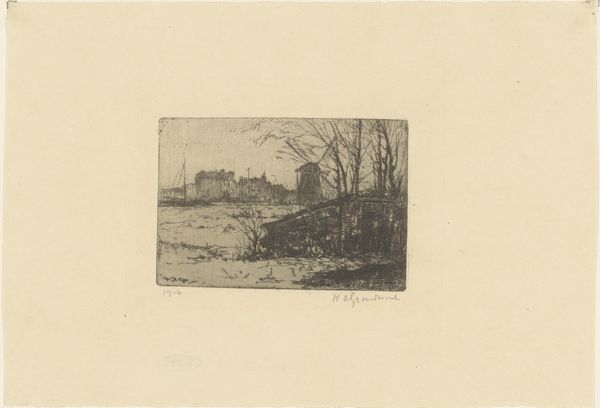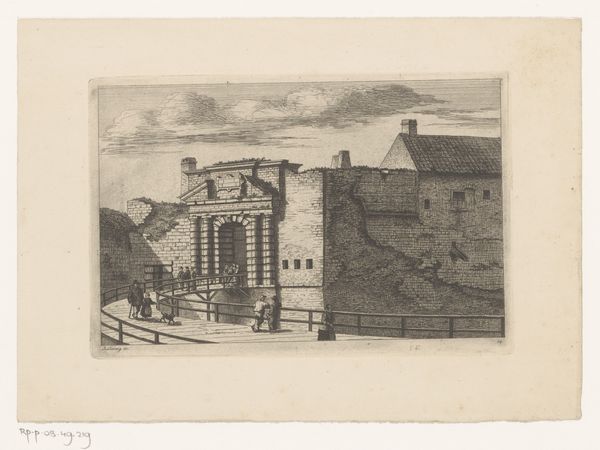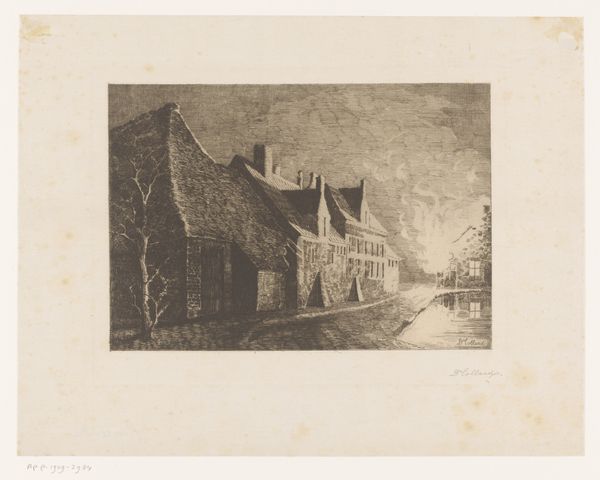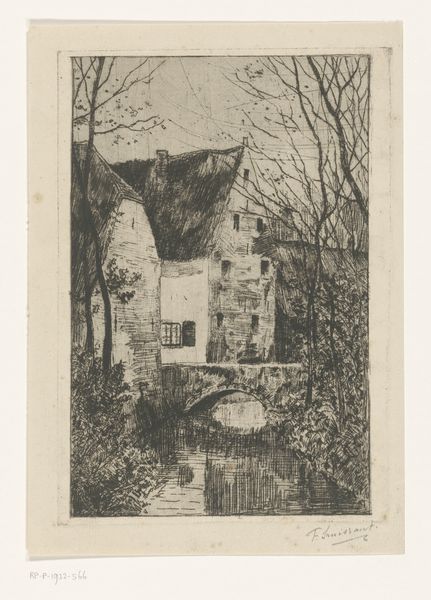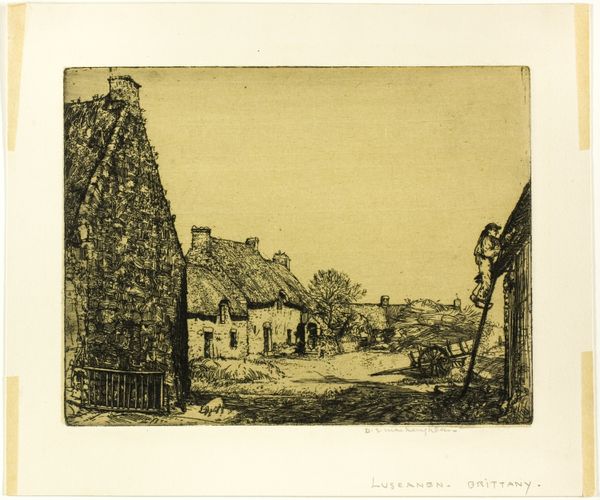
drawing, print, etching, paper
#
drawing
# print
#
etching
#
landscape
#
paper
Dimensions: 148 × 183 mm (image/plate); 192 × 212 mm (sheet)
Copyright: Public Domain
Curator: This is Donald Shaw MacLaughlan's 1899 etching, "St. Julien-le-Pauvre," currently residing here at The Art Institute of Chicago. What's your initial take? Editor: Bleak, almost oppressive. The skeletal trees dominate the composition; it’s winter, undoubtedly, a visual metaphor for some sort of social or personal decay, maybe? The architectural structures seem secondary, as if the natural world is encroaching upon the man-made. Curator: That's a striking observation. The church, St. Julien-le-Pauvre, carries centuries of symbolic weight, standing as a historical site in the Latin Quarter. It started as a humble chapel in the 6th century but it wasn't complete until the 12th! The artist would have recognized the continuity. But the bare trees perhaps highlight something about memory, even something sorrowful, beyond the specific historical site. The leafless branches can easily become metaphors for human conditions of loss. Editor: Absolutely. Churches represent societal power structures. Here, that power seems diminished or in transition, the skeletal branches hinting at an unraveling or an interrogation of its authority in the modern world, what do you think of the inclusion of what appears to be mother and daughter off to the left? Curator: The mother and child definitely create a tender moment of the enduring life-cycle. Motherhood echoes similar sentiments evoked by a great symbol like the church or the tree and this group suggests resilience amidst what might feel bleak, like those buildings fading into shadow. They appear to pass by almost unseen in the setting sun! What did the piece leave you thinking about? Editor: MacLaughlan's print underscores the layered relationship between institutions, personal narratives, and natural cycles, reminding us of how symbols get loaded over the centuries with meaning, yet remain relevant today, which is why it is worth re-examining. Curator: For me it leaves lingering questions of what endures through time. The stones of the church, the shape of motherhood... It's a powerful reflection of shared human heritage that echoes in us even now.
Comments
No comments
Be the first to comment and join the conversation on the ultimate creative platform.
